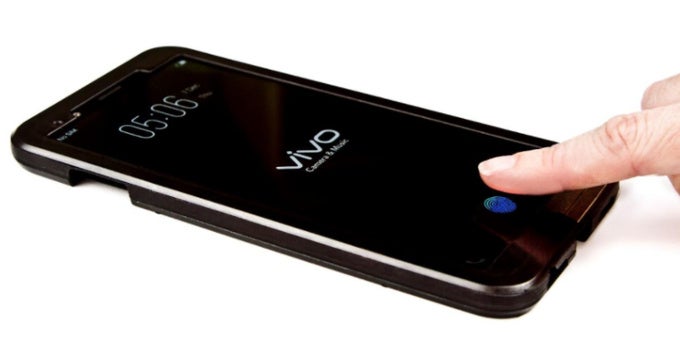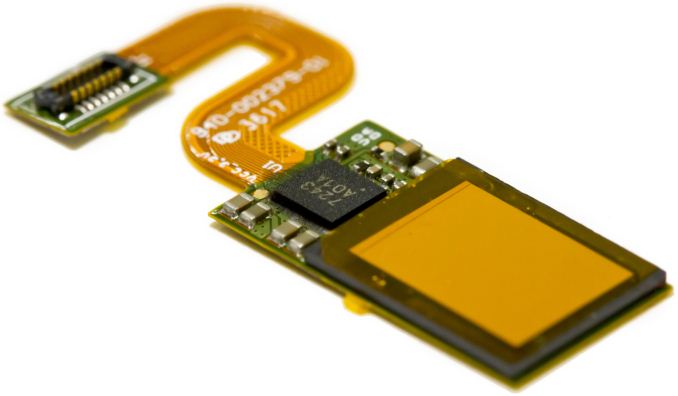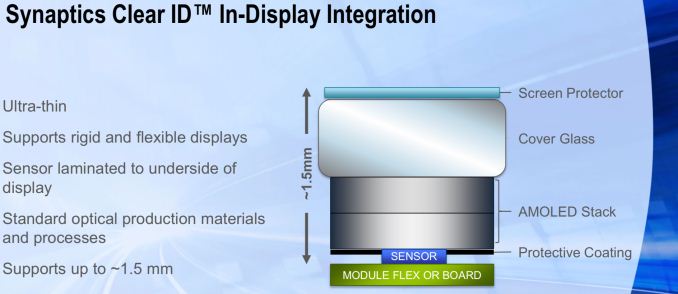Vivo, not Samsung, will have the first phone with in-screen fingerprint scanner

And while you might have thought that it will be Samsung or some other familiar name to have the new in-screen fingerprint scanner in a flagship phone, it is now clear that the first phone with an in-screen fingerprint sensor will actually be Vivo, a Chinese phone maker that most people in the West know nothing about. The information comes from Forbes contributor Patrick Moorhead who got to spend some time with a pre-production unit of the Vivo phone.
Synaptics says a phone with an in-screen finger reader is due in Q1 2018
While we are a bit disappointed that we are not likely to see a Galaxy S9 with an in-screen finger reader, this is good news for China and the Asian market. Vivo is big in China and it's part of the giant BBK Electronics parent company, the same company that also owns Oppo and OnePlus. While you might be most familiar with OnePlus, it is actually the smallest of the three phone makers under BBK ownership.
Here are some pics @anshelsag and I took of the Vivo smartphone with the Synaptics in-display fingerprint reader. The CMOS image sensor is .7mm thick and reads the fingerprint right through the OLED display. The experience was faster than I expected. pic.twitter.com/u1NFpXtFQM
— Patrick Moorhead (@PatrickMoorhead) December 14, 2017
As to the technology behind the in-display fingerprint scanner itself, carrying the model name Clear ID FS9500, it is designed to work with phones with an 18:9 and 20:9 orientation. These are the new breed of taller, usually "bezel-less" phones.
The new in-screen sensor is a small CMOS device placed below an AMOLED screen. In order for it to work, the finger has to be illuminated, so that the fingerprint scanner can read the reflections of the finger scan. To create this reflection, part of the screen has to light up, and then the finger reader will capture the reflection between the AMOLED pixels. Synaptics says that the fingerprint scanner itself is very frugal, consuming merely 80mA of power. The whole setup also uses the built-in accelerometer in the phone and other sensors to know when to activate the fingerprint reader and light up the appropriate part of the display.

The overall process takes just 0.7 seconds, not quite as fast as the 0.2 seconds that are commonly advertized for traditional fingerprint scanners these days, but still faster than the average of 1.4 seconds it takes to use face recognition.
The Clear ID SF9500 sensor itself measures just 0.69mm in thickness and does not make smartphones significantly thicker. The sensor has to be embedded by the screen manufacturer where display assemblies are made and Synaptics is working on making those partnerships. The company says that the process of embedding the new finger scanner is not very complex, so it does not add much in terms of cost of the final device.

Lastly, let us also remind you that Synaptics' announcement of the world's first in-screen fingerprint scanner is a bit of a blow to Qualcomm. Qualcomm has been working on similar tech for a while now, but has not announced anything officially yet. Synaptics on its part touts the Clear ID FS9500 as a "smart" technology that can detect fingerprints in various lighting conditions, can recognize wet or cold fingers, and detect attempts to spoof fingerprints.
source: Forbes










Things that are NOT allowed: